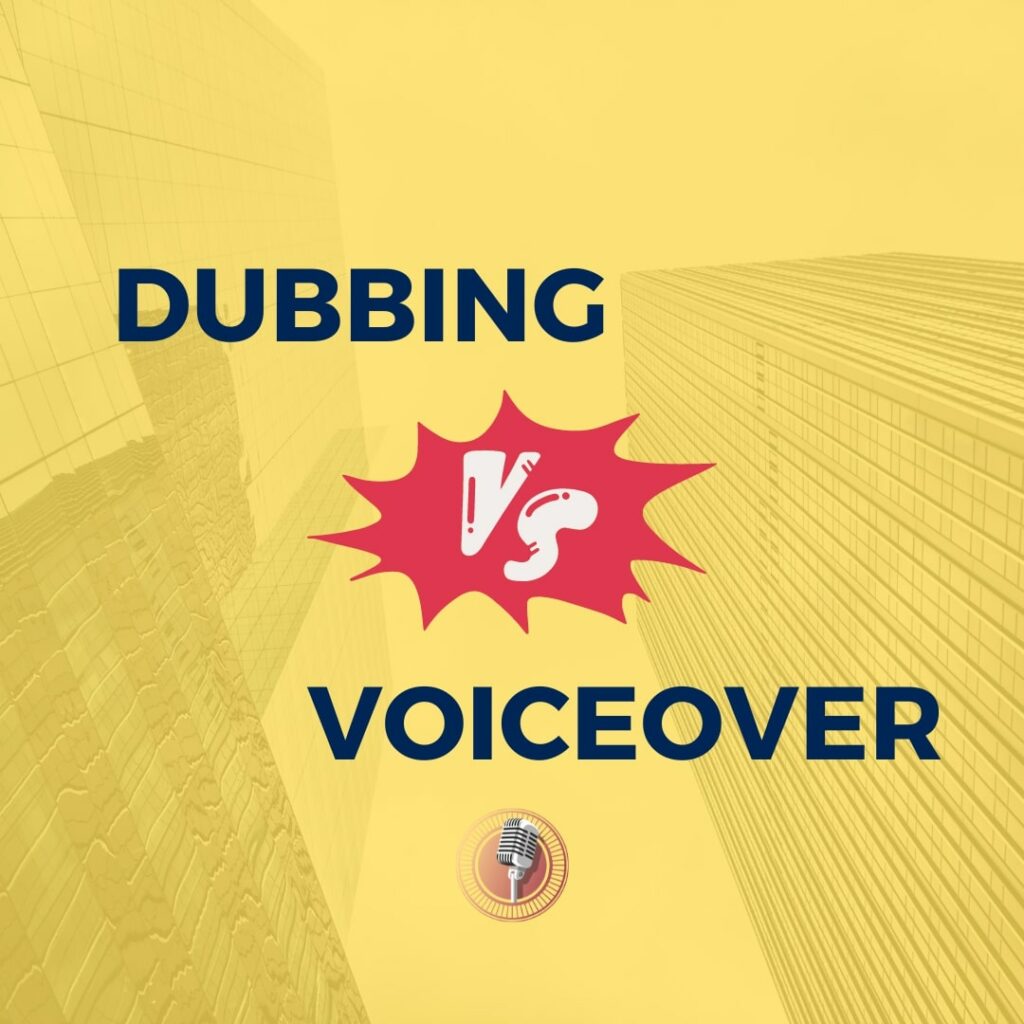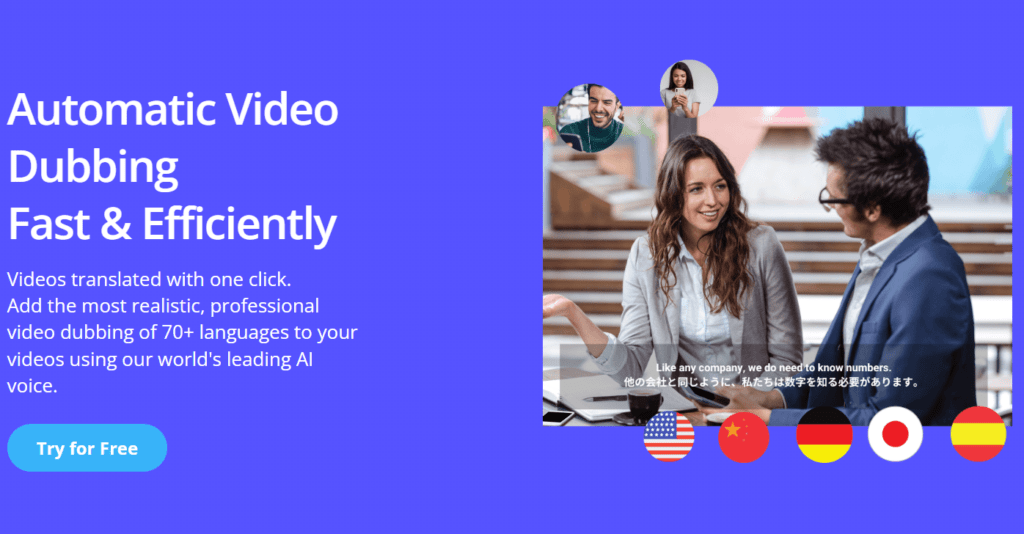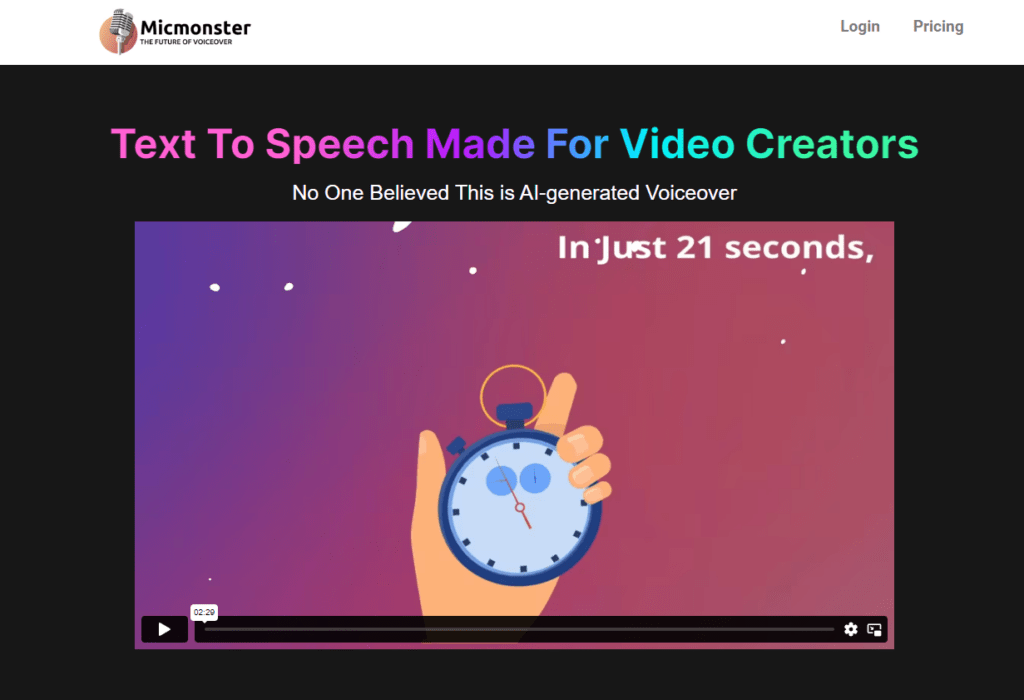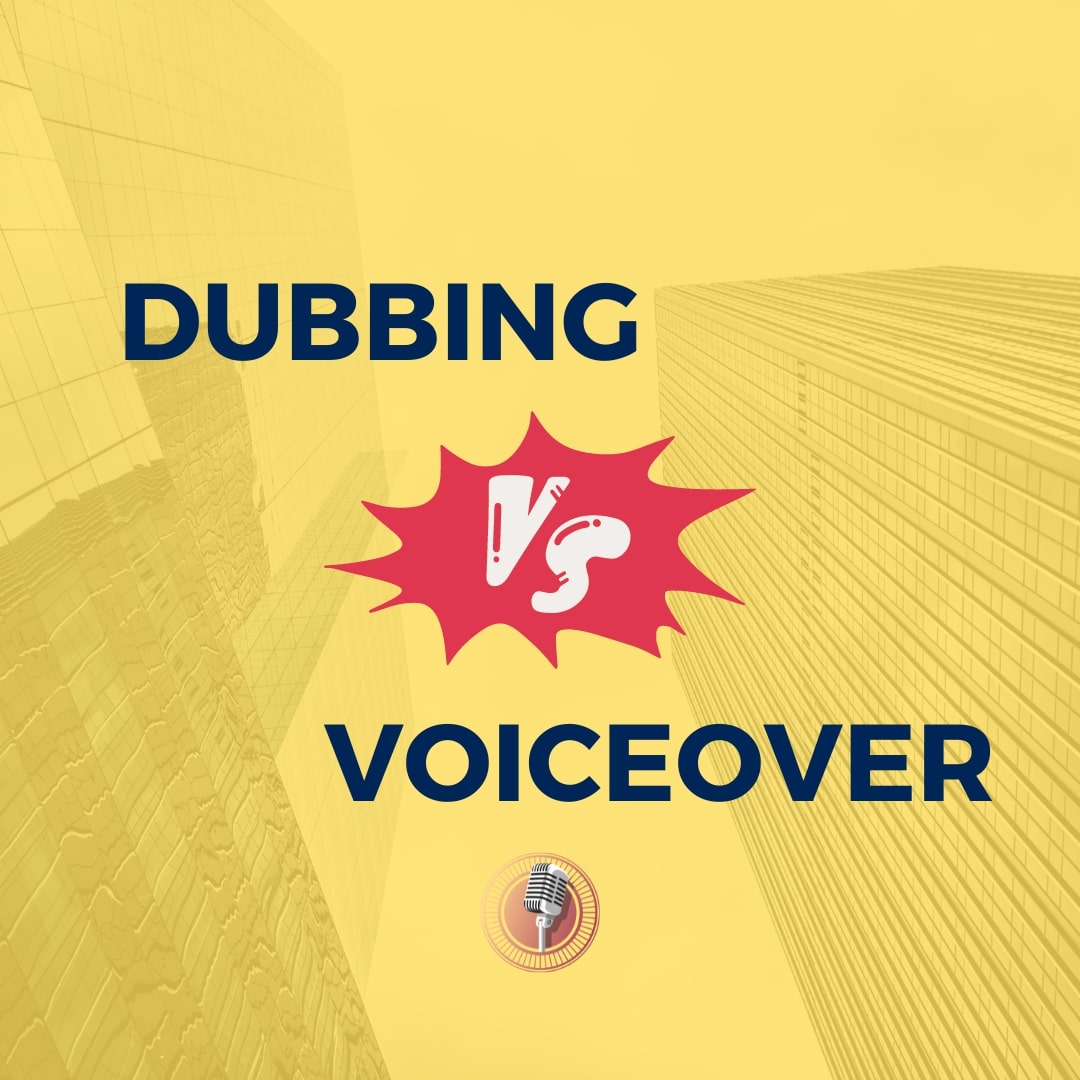When it comes to audiovisual production, choosing between dubbing and voiceover can be a challenging decision. Both methods have their benefits and drawbacks, making it essential to know which one to use for a specific project. In this article, we’ll dive into the differences between dubbing and voiceover, their benefits, and when to use each method.
Dubbing is the process of replacing the original audio of a video with a new one in a different language. Voiceover, on the other hand, involves adding a new voice to a video, usually in the same language, to provide context or additional information. While both methods involve changing the audio of a video, the techniques used and the outcomes are vastly different.
In this article, we’ll explore the benefits of both dubbing and voiceover, providing examples of when each method is best suited for a particular project. We’ll also take a look at famous brands that have successfully used both dubbing and voiceover, giving you a better understanding of how to make the right choice for your audiovisual production needs.
Whether you’re a filmmaker, video producer, content creator, or marketing professional, this article will provide you with the knowledge and tools you need to make an informed decision about whether to use dubbing or voiceover for your next audiovisual project. So let’s dive in and explore the world of dubbing vs. voiceover!

Differences between Dubbing vs. Voiceover:
While both dubbing and voiceover involve changing the audio of a video, they differ significantly in terms of technique and outcome.
Dubbing is the process of recording a new soundtrack in a different language and then replacing the original audio with the new one. Dubbing involves syncing the new audio with the video’s visuals, ensuring that the characters’ lip movements match the dialogue. Dubbing requires a high degree of technical expertise, as it involves recording and mixing the new audio to achieve a seamless match with the video.
In contrast, voiceover involves adding a new voice to a video to provide context or additional information. Voiceover does not require syncing the new audio with the video’s visuals, making it a less technically complex process than dubbing. Voiceover can be done in the same language as the original audio or in a different language, but it’s often used to provide supplementary information, such as a voiceover narration or commentary.
One of the key differences between dubbing and voiceover is the level of immersion they offer. Dubbing is considered a more immersive option since it involves replacing the original audio with a new one that matches the visuals. With voiceover, the original audio is often still present, making it a less immersive option.
Another critical difference is the level of control over the audio that each method offers. Dubbing offers a high level of control since the new audio can be recorded and mixed to achieve the desired sound quality and tone. In contrast, voiceover offers less control since the original audio is still present, making it difficult to achieve a seamless blend between the two.
In summary, while both dubbing and voiceover involve changing the audio of a video, they differ significantly in terms of technique and outcome. Dubbing offers a more immersive and technically complex option, while voiceover provides a simpler alternative that’s ideal for providing supplementary information or commentary. The choice between the two depends on the specific needs of your audiovisual project.
Benefits of Dubbing:

Dubbing has several benefits that make it a popular option for audiovisual production, especially for international distribution.
Increased Accessibility: Dubbing allows you to reach a global audience by providing audio in multiple languages. This makes it easier for non-native speakers to enjoy your content without the need for subtitles.
Reduced Production Costs: Dubbing can be more cost-effective than producing subtitles or creating a new video in a different language. While the initial investment may be higher, the cost per unit decreases as the number of units increases.
Consistent Audio Quality: Dubbing allows you to achieve consistent audio quality across all versions of your video. By using professional dubbing services, you can ensure that the audio quality matches the original audio, providing a high-quality experience for your audience.
Better Lip Syncing: Dubbing offers a better lip-syncing experience since the new audio is recorded to match the original video’s lip movements. This provides a more natural viewing experience, making it easier for the audience to follow the dialogue.
Greater Flexibility: Dubbing offers greater flexibility when it comes to choosing voice actors and recording the audio. This allows you to choose the best voice actor for each role, resulting in a more authentic and engaging experience for the audience.
In summary, dubbing offers several benefits, including increased accessibility, reduced production costs, consistent audio quality, better lip syncing, and greater flexibility. By using professional dubbing services, you can provide your audience with a high-quality viewing experience that’s tailored to their language and cultural preferences.
Benefits of Voiceover:

Voiceover is a popular option for audiovisual production that offers several benefits, especially when it comes to short-form content and limited budgets.
More Natural Sound: Voiceover offers a more natural sound since it involves adding a new voice to the original audio without replacing it. This makes it easier for the audience to follow the dialogue and provides a more engaging viewing experience.
Less Disruptive to Visuals: Voiceover is less disruptive to the visuals since it does not involve replacing the original audio with a new one. This makes it easier to focus on the visuals while still providing additional information through the voiceover.
Easier to Produce: Voiceover is easier and faster to produce than dubbing since it does not require syncing the new audio with the video’s visuals. This makes it a more cost-effective option for short-form content or limited budgets.
More Control over Tone and Emotion: Voiceover allows for more control over the tone and emotion conveyed through the audio. This makes it easier to create a specific mood or convey a particular message to the audience.
Localization: Voiceover is an excellent option for localizing content since it allows you to add a new voice to the original audio without changing the visuals. This is especially useful for videos with limited visuals or where the visuals are essential to the message.
In summary, voiceover offers several benefits, including a more natural sound, less disruptive visuals, ease of production, greater control over tone and emotion, and localization capabilities. By using professional voiceover services, you can create engaging content that’s tailored to your audience’s needs and preferences.
Read more:
When to Use Dubbing:
Dubbing is an excellent option for audiovisual production in certain situations, such as international distribution, large cast of characters, and syncing audio with pre-existing video.
International Distribution: If your goal is to distribute your content globally, dubbing is a must. Dubbing allows you to reach non-native speakers and make your content more accessible to a broader audience.
Cost Efficiency: Dubbing can be more cost-effective than producing subtitles or creating a new video in a different language, especially when producing content in multiple languages.
Large Cast of Characters: If your video has a large cast of characters, dubbing can help you create a more immersive and engaging experience for the audience. Dubbing allows you to choose the best voice actor for each character, resulting in a more authentic and engaging experience.
Syncing Audio with Pre-Existing Video: Dubbing is an excellent option when you need to sync audio with pre-existing video, such as in movies or TV shows. Dubbing allows you to achieve better lip syncing, resulting in a more natural viewing experience.
Multiple Language Versions: If you need to produce multiple language versions of your video, dubbing can provide a consistent audio quality across all versions. By using professional dubbing services, you can ensure that the audio quality matches the original audio, providing a high-quality experience for your audience.
In summary, dubbing is an excellent option for international distribution, large cast of characters, syncing audio with pre-existing video, and producing multiple language versions. By using professional dubbing services, you can create a high-quality viewing experience that’s tailored to your audience’s language and cultural preferences.
See also:
When to Use Voiceover:
Voiceover is an excellent option for audiovisual production in certain situations, such as short-form content, small cast of characters, high emotional impact, and limited budget.
Short-Form Content: If you’re producing short-form content, such as commercials or explainer videos, voiceover can be a great option. Voiceover allows you to provide additional information or commentary without disrupting the visuals, making it an effective tool for short-form content.
Small Cast of Characters: If your video has a small cast of characters, voiceover can be an effective way to provide additional information or commentary. This allows you to create a more engaging and informative experience for the audience without the need for dubbing.
High Emotional Impact: Voiceover can be an effective tool for creating a high emotional impact in your video. By choosing the right voice actor and tone, you can create a more engaging and emotional experience for the audience.
Limited Budget: Voiceover is a more cost-effective option than dubbing, making it an excellent choice for projects with a limited budget. This allows you to create high-quality content without breaking the bank.
In summary, voiceover is an excellent option for short-form content, small cast of characters, high emotional impact, and limited budget. By using professional voiceover services, you can create engaging and informative content that’s tailored to your audience’s needs and preferences.
See also:
Famous Brands Using Dubbing and Voiceover:
Many famous brands have successfully used both dubbing and voiceover to reach a global audience and provide a more immersive viewing experience. Here are some examples:
Disney: Disney is a master of dubbing, with numerous films and TV shows dubbed in multiple languages. For example, the iconic Disney film, The Lion King, has been dubbed in over 30 languages, allowing it to reach a global audience.
Netflix: Netflix offers dubbed and subtitled versions of many of its original content to reach a global audience. For example, the popular Spanish crime drama, Money Heist, has been dubbed in several languages, making it a global hit.
Coca-Cola: Coca-Cola is known for using voiceover in its commercials to provide additional information and commentary. For example, the famous “Hilltop” commercial from the 1970s featured a voiceover singing the iconic jingle, “I’d Like to Teach the World to Sing.”
Audi: Audi is another brand that has successfully used voiceover in its commercials. For example, the “Duel” commercial featured a voiceover narration that added suspense and drama to the ad.
McDonald’s: McDonald’s has used both dubbing and voiceover in its commercials, depending on the target audience. For example, the “I’m Lovin’ It” jingle has been dubbed in multiple languages, while the “Egg McMuffin” commercial features a voiceover explaining the product.
In summary, many famous brands have successfully used both dubbing and voiceover to reach a global audience and provide a more immersive viewing experience. By using professional dubbing and voiceover services, you can create engaging content that’s tailored to your audience’s language and cultural preferences.
Conclusion:
When it comes to audiovisual production, choosing between dubbing and voiceover can be a difficult decision. Both methods have their benefits and drawbacks, making it essential to know which one to use for a specific project.
Dubbing is an excellent option for international distribution, large cast of characters, syncing audio with pre-existing video, and producing multiple language versions. Voiceover, on the other hand, is a great choice for short-form content, small cast of characters, high emotional impact, and limited budget.
By understanding the differences between dubbing and voiceover and when to use each method, you can create high-quality content that’s tailored to your audience’s needs and preferences. Whether you’re a filmmaker, video producer, content creator, or marketing professional, choosing the right method is essential for creating engaging and informative content.
Remember, by using professional dubbing and voiceover services, you can achieve the best results and provide your audience with a high-quality viewing experience. So, whether you choose dubbing or voiceover, make sure to invest in the best professionals to ensure the success of your audiovisual project.

